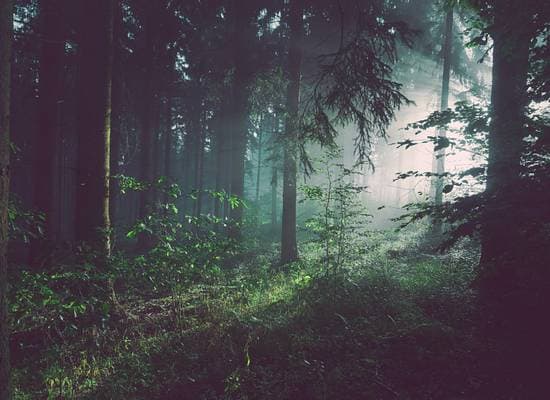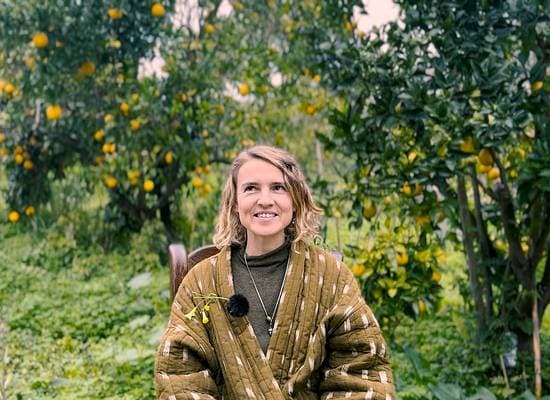Web3
Natural Assets - The New Economy of Nature

Head over to our Learning Hub to become a Wanderer and unlock access to the full video class, along with many others.
The New Economy of Nature: How We’re Revaluing the Planet in Real-Time
Ah, the aloe vera plant—modest in stature, but brimming with wisdom. Its leaves, a humble vessel of biomass, whisper the secrets of growth and survival: air, water, temperature, precipitation—all conspiring to create life. This is the language of natural assets, the foundation of a flourishing planet and, perhaps more importantly, the cornerstone of a new economic renaissance.
Let’s not kid ourselves; humanity has always been a little too good at slapping price tags on things. But what if I told you that the leaves of an aloe plant, the roots of an ancient tree, or the whisper of clean air through your urban jungle all have intrinsic, measurable value? Welcome to the dazzling world of ecosystem services, where nature’s gifts are finally getting their moment in the spotlight. And let me assure you, this isn’t some crunchy granola pipe dream—it’s the future of finance.
The Price of a Breath, the Value of a Forest
Ecosystem services are nature’s dividends, paid out not in cash but in clean air, fresh water, stable soil, and spiritual nourishment. And yes, we’re measuring all of it—though admittedly, through a human-centric lens (how very on-brand). Consider the carbon markets, where corporations fork over millions for the privilege of offsetting their emissions by paying for trees to sequester carbon.
But not all value can be measured in dollars. Take, for example, water funds in Latin America. These programs recognize the unsung heroes—forests and watersheds—that deliver clean water to entire cities. The people restoring these ecosystems are often underpaid, yet their efforts ripple downstream, quenching the thirst of millions. A thank-you note, at the very least, wouldn’t go amiss.
TDF’s Big Bet on Biodiversity
Let’s pivot to a little utopian experiment known as the Traditional Dream Factory (TDF). Imagine a community striving for self-sufficiency, where gardens feed the people, agroforestry systems clean the air, and biodiversity is the rule, not the exception. TDF is setting aside 50% of its land for rewilding—think forests reclaiming their territory, water flowing freely, and humans living as part of the ecosystem rather than its overlords.
By nurturing its natural capital assets, TDF is future-proofing itself. Forests stabilize water cycles, gardens provide food, and agroforestry—oh, let’s talk about agroforestry! Picture this: instead of barren monocultures of lettuce, you’ve got lush, layered landscapes teeming with crops, shrubs, and trees. It’s agriculture as a symphony, not a solo act.
Threats to the Symphony of Life
But it’s not all sunshine and chlorophyll. Human activity—urban sprawl, concrete jungles, and infrastructure projects—continues to bulldoze ecosystems. A road replaces a forest, and with it goes the carbon sequestration, the water retention, the microclimate stability. Non-human threats, often exacerbated by human actions (hello, climate change), are equally devastating. Fires strip landscapes bare, floods drown biodiversity, and the balance tips further out of our favor.
Yet hope is not lost. Communities like TDF are leading the change, demonstrating that conservation is not just a noble pursuit but an economically viable one. By safeguarding their natural assets, they’re ensuring a future where ecosystem services don’t just survive—they thrive.
From Death to Revival: A Personal Journey
Terex once lived by a lake in Paraguay, a place that had inspired songs and poems but was now choking on its own nutrients. Urbanization had stripped the surrounding forests, destabilizing the soil and sending floods of runoff into the once-pristine water. The lake became eutrophic, its life suffocated by algae blooms. Tourism dried up, families moved away, and the economic heart of the community withered.
He spent two years documenting this decline, and the findings were clear: deforestation was costing the community millions in lost tourism revenue, not to mention the incalculable loss of cultural identity. It was a lesson in the tangible consequences of undervaluing natural assets.
The Rising Value of Regeneration
Now, the tables are turning. Corporations are scrambling to meet carbon neutrality goals, driving up the demand for carbon credits. Projects like TDF and global initiatives—think mangrove reforestation—are stepping in to meet this demand. Mangroves, those unassuming coastal trees, not only sequester staggering amounts of carbon but also shield communities from floods and provide fisheries with life-sustaining habitats. The world is waking up to the fact that regenerating nature isn’t just the right thing to do—it’s a lucrative business.
2050: A World Reimagined
Picture this: It’s 2050. Cities hum with the sounds of birds and rustling leaves. Parks bleed seamlessly into skyscrapers, and every action—every breath—is in harmony with the natural world. Humanity has learned to value not just GDP but GQOL (Global Quality of Life), encompassing every living thing. For every tree we fell, we plant ten more. For every river we pollute, we clean two.
This is the dream we’re chasing. And through projects like TDF and the relentless drive of individuals and communities, it’s becoming our reality. The ripple effects are already here, and they’re growing stronger. We’re finally seeing the economy for what it could be: a reflection of our symbiosis with the natural world.
So let’s raise a glass to biodiversity, to natural capital, and to the swanky future where nature is not a commodity but a co-conspirator in our collective success. Cheers to rewilding the world—one carbon credit at a time.
What to read next

Regenerative loops
It is often said that in our consumerist society, our power comes through consumption. This power is hard to quantify for a private individual, and the sum of d...

Regenaissance
There is a revolution going on. You might not have heard about it. No one has been decapitated, and there hasn't been a violent take-over. But the stakes are hi...

Evgenia Emets: Art, Regeneration, and the Rise of Forest Sanctuaries
Head over to our Learning Hub to become a Wanderer and unlock access to the full video class, along with many others.Evgenia Emets doesn’t just discuss regenera...

